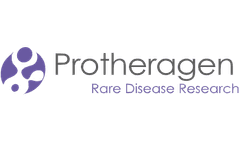Refine by
Phenotype Articles & Analysis
115 articles found
Researchers must remain cautious, as the manipulation of normal cells can lead to changes that may not fully recapitulate the behavior of primary cells or tumors in vivo. The phenotypic characteristics and genetic stability of these cell lines should be thoroughly assessed to ensure their relevance in experimental setups. ...
These models retain the genetic and phenotypic characteristics of the original human tumors, providing insights into how different therapies may perform in real-world scenarios. ...
By establishing drug sensitivity profiles for individual patients, clinicians can tailor therapy based on the unique genetic and phenotypic characteristics of the tumor or pathogen. This personalized approach not only enhances the likelihood of treatment success but also minimizes the exposure of patients to ineffective therapies, thereby reducing side effects and improving ...
The most commonly used colorectal cancer cell lines include HCT116, SW480, and HT-29, each with distinct genetic and phenotypic characteristics. Applications in Research Colorectal cancer cell lines are instrumental in various research applications. ...
In research, dsRNA is primarily used to study gene function through RNA interference, enabling scientists to silence specific genes and analyze resulting phenotypic changes. This has profound implications in understanding gene regulation, cellular pathways, and disease mechanisms. ...
At the heart of stable cell lines is their ability to maintain uniform genetic and phenotypic characteristics over numerous generations. This consistency is achieved through the integration of a specific gene of interest into the host cell’s genome, allowing it to be perpetually expressed. ...
In cancer research, zebrafish models have advantages over traditional cell culture assays because a wider range of phenotypes can be tested. Zebrafish and mammals share common molecular pathways for tumor progression. ...
This feat is paramount in confirming the accuracy of gene edits and establishing definitive correlations between genotype and phenotype. Zebrafish genome editing services hand researchers the tools to engineer zebrafish not only with induced specific genetic mutations but also with fluorescent reporters. ...
Discover how matched tumor-normal sequencing can help clinical researchers detect the somatic origin of variants with certainty. In the era of precision oncology, it has become increasingly common for patients diagnosed with cancer to undergo tumor sequencing. Identifying the mutations that make up a tumor’s genomic landscape can help guide selection of targeted therapies and inform ...
The translation ratio (TR) or translation efficiency is defined as the ratio of RNC mRNA to total mRNA. TR is linked to cell phenotype and is influenced by the UTR region, miRNA, and other factors. ...
Tumors are a heterogeneous group of diseases, and it is not surprising that their genotypes are so different that their metabolic phenotypes differ. Even the same tumor shows differences in metabolic phenotype depending on the tumor cells that constitute it. ...
Deletion of target proteins in cells and observation of their phenotype is one of the most common methods for characterizing target protein function. ...
These endogenous knock-in cell lines enable a clear understanding of the contribution of the gene or mutation to a phenotype. There are unlimited uses for point mutation cell lines at pre-defined loci, including functional assays, drug screening, FACS screening of membrane proteins, gene expression studies, gene therapy and antibody immunization boosting research. ...
The cells can be used as model systems in phenotypic and drug screening, high content analysis, target identification, drug development, toxicology testing, gene editing studies, reporter assays. ...
When fed a high-fat diet, germ-free mice were resistant to the obesity phenotype, while germ-free mice had lower plasma triglyceride and low-density lipoprotein levels compared to mice with normal flora, due in part to reduced lipid digestion, absorption and transport. ...
In breast cancer, for example, the loss of CDH1 expression is associated with a more aggressive phenotype and poorer prognosis. CDH1 loss allows cancer cells to detach from the primary tumor and invade surrounding tissues, leading to metastasis. ...
So far, some biotech giants have established a series of research and development technologies for genetically modified animal models, such as gene cloning, gene knockout plasmid construction, experimental animal embryonic stem cell manipulation, strain breeding, and phenotype analysis. Combined with these technologies, there would be more stable and reliable animal models ...
Flow cytometry (FC) is an important tool for analyzing complex pathways and responses of single cells, which can track cell phenotypes and functions in multiple dimensions. It is also increasingly applied in drug development. ...
It has been considered that diseases are generally influenced by obtained biological alterations, but it is becoming evident that any phenotype is the result of a complex interplay between genotype, epigenome, and environment. ...
This feat is paramount in confirming the accuracy of gene edits and establishing definitive correlations between genotype and phenotype. Zebrafish genome editing services hand researchers the tools to engineer zebrafish not only with induced specific genetic mutations but also with fluorescent reporters. ...








